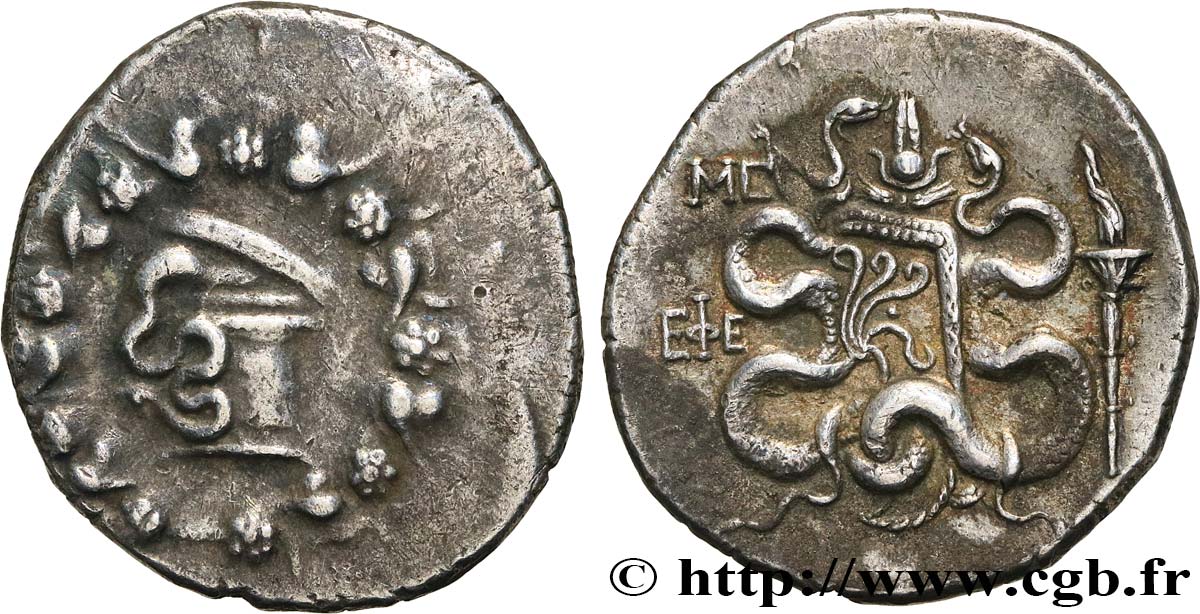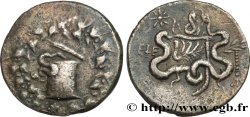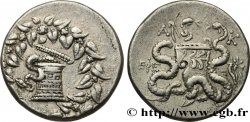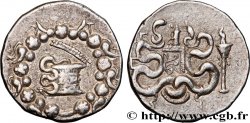bgr_621600 - IONIA - EPHESUS Cistophore
Not available.
Item sold on our e-shop (2021)
Price : 380.00 €
Item sold on our e-shop (2021)
Price : 380.00 €
Type : Cistophore
Date: an 46
Mint name / Town : Éphèse
Metal : silver
Diameter : 27,5 mm
Orientation dies : 11 h.
Weight : 12,61 g.
Rarity : R2
Coments on the condition:
Exemplaire centré. Très joli revers finement détaillé. Frappe plus brouillée au droit. Patine grise
Catalogue references :
Obverse
Obverse legend : ANÉPIGRAPHE.
Obverse description : Ciste mystique de laquelle s'échappe un serpent ; le tout dans une couronne dionysiaque.
Reverse
Reverse description : Arc et goryte orné d'un aplustre entre deux serpents ; dans le champ à droite, une torche allumée ; au dessus, une coiffe d’Isis.
Reverse legend : EFE/ ME
Reverse translation : (d’Éphèse).
Commentary
Pour l’atelier d’Éphèse, nous avons des cistophores datés entre l’an 1 (134-133 avant J.-C.) et 67 (68-67 avant J.-C.). Ce cistophore est frappé l’année où 80.000 Romains furent assassinés dans toute l’Asie à l’instigation de Mithridate VI du Pont.








 Report a mistake
Report a mistake Print the page
Print the page Share my selection
Share my selection Ask a question
Ask a question Consign / sell
Consign / sell
 Full data
Full data











